- Home
- Farley Mowat
Sibir Page 5
Sibir Read online
Page 5
About 1634 marauding Cossack bands became the first westerners to see the lake. In its surrounding forests they found great numbers of a singularly beautiful member of the weasel family, the Barguzin sable.
Lust for sable pelts had been directly responsible for the first breaching of the Ural wall when, in 1581, Russia’s most powerful merchant family, the Strogonovs, sent a rag-tail army of Cossack mercenaries through the Perm Gates in search of sable – a search which led to the conquest of a new world.
Captained by a free-booter named Yermak, the Cossacks first destroyed the small Mohammedan Khanate of Kutchum, just east of the Urals, which was the only human society in Siberia capable of more than token resistance to the invaders from the west. Impelled by the same rapaciousness which motivated the Spanish conquistadors in South and Central America, and the Dutch, French and English in North America, small bands of Cossacks then swept eastward across Siberia, each band striving to outpace all others and be first into the territory of some undiscovered tribe which could be brutalized into paying tribute in “soft gold” – furs – but, above all, in sable furs. What the beaver was to the Mountain Men – those ill-famed buccaneers of the American west – sable was to the Cossacks. In just under fifty years they crossed the whole of Siberia and reached the Pacific.
The Cossacks, and those who followed, were one with their European compatriots who were then busily swarming into Africa, the Americas and the Pacific in search of loot. They were men who had abrogated one of the basic principles of life: that each living thing shall only take from the world around it what it actually requires to secure its own survival. The new kind of man – a mutant if ever there was one – took everything he could grasp, and then reached out for more. When the soft gold of the Barguzin sable and of the other land fur-bearers around Baikal had been almost exhausted, the invaders turned to the lake itself.
Several million years ago one small group of mammals had given up the hard-won terrestrial way of life and returned to the salt seas from which all life originated. The sea was kind to these backsliders and they ultimately diversified into the many members of the seal family. Most of them chose to live in the open oceans where the greatest numbers of their kind still remain.
However, some hundreds of thousands of years ago, a few of the early seals entered the arctic estuary of one of the great Siberian rivers, the Yenisei, and worked their way south into the very heart of the Asian land mass to Baikal.
Here they found themselves in an inland sea where conditions were not so different from those in the greater sea – two thousand miles away to the north. The water was fresh instead of salt, but that was not material. Fish were abundant. Because of its great depth and the presence of convection currents of oceanic character, the ice formed late in the winter and there were always areas near the river mouths where it remained thin enough so that air-breathing mammals could keep holes open. In other areas of Baikal the mountain winds built up heavy blankets of snow atop the ice wherein the female seals could build snug caves in which to bear their pups.
When natural man arrived upon the scene he killed occasional seals, but his predations were so minor that they made no impression on a herd which, it is estimated, must have numbered several hundred thousand individuals.
When the European conquerors turned their attention away from the forests where life was growing silent, and looked upon the Sacred Lake, they must have been incredulous at the amount of life it contained. Here was a killing ground worthy of their mettle. But that world of water was so vast (some sixteen thousand cubic miles of water) that the rape took some time to complete. By the early years of the twentieth century there had been solid victories. The giant Baikal sturgeon was virtually extinct. The apparently inexhaustable schools of fine-flavoured whitefish called omul were fading fast. A number of other fishes were becoming scarce. And the seals were almost gone; no more than four or five thousand of them still survived.
The battle to destroy the living world of Baikal was being won. Fishermen and seal hunters were receiving indirect assistance in their work of destruction from landsmen. In the mountain valleys drained by Baikal’s three hundred and sixty inflowing streams and rivers, the forests where the sables were hardly more than a memory were themselves being razed. Siberian cedars, high towering patriarchs, many of them more than a thousand years old, all but disappeared. Larch, and the lesser species, took their turn. The logs were floated down the once crystal rivers, gradually coating the stream beds with thick layers of bark until many of the lake fishes that used the rivers as nurseries could no longer find suitable spawning grounds. Tannic acid and other decomposition products from sunken logs and bark began contaminating the waters of the lake itself.
Then, in 1962, the economic planners in Moscow decided to build a gigantic cellulose and wood-chemical combine on the south shore of Lake Baikal. Even by Soviet standards the plans were grandiose. There were to be five plants with their associated towns in the combine. Secure in the conviction that the true Good is to be found in more production, the planners turned their blueprints over to the builders and in 1963 work on the first two plants began.
At this juncture something truly remarkable occurred. In the Soviet Union, that closed society where, so we are told, the voice of the individual is never heard, there arose a thunder of protests from individuals in every part of the land. The editors of the monolithic All-Union papers, Pravda and Izvestia, having proudly announced the birth of the gigantic new production complex at Baikal, found themselves inundated by letters of outrage. As the two plants neared completion the intensity of the storm strengthened.
An elderly, much respected Moscow writer described to me what followed:
“The word Baikal became a rally cry even to people who knew very little about it except its name. They were acute enough to see that finally the high priests of progress-through-production had to be brought to their senses. The threat to Baikal made people understand that unless this was done the new world we were building would be no better than a ruined wasteland fit for machines, but not for human beings. Hundreds and thousands of professional writers, poets, artists and scientists took it on themselves to make Baikal the symbolic warning. They were joined by masses of workers and by revered members of the Academy of Science, and even by some state officials. Every magazine and newspaper heard the voice of what was a true mass movement of the people.
“For a while the authorities who had designed the cellulose combine tried to drown out the protests. There were long articles lashing out at reactionary sentimentalists who tried to stop the glorious march of our revolution. There were some threats, and some of the more prominent of Baikal’s defenders were told they would get into trouble if they did not keep quiet. They refused to be quiet. The fuss kept getting worse. The plants were completed and began operations. They began pouring their poisons into the Sacred Sea. Within three months there were reports of fish dying in Baikal and even of people getting sick from eating fish caught in the Angara. The fight of the people to save the lake became more furious and then, quite suddenly, the authorities gave in. The plants were closed.”
I visited Baikal several times and on one occasion sat in a little cafe on the shore of the lake, watching its waters rage in the grip of a roaring October storm. Boris Arimov, an Irkutsk poet who spent seven years fighting for Baikal, sat with me and told me more of the story.
“When they closed the plants we suspected it was only for long enough to let things cool down. So, we did not let things cool down. We kept the fire going and gave it more fuel. Now we demanded that fishing be banned until the stocks returned to normal. No more slaughter of the seals, we said. We said that all lumbering must be stopped on the Baikal watersheds. We demanded that this treasure – one of the world’s great treasures – be cleansed until it was again as beautiful as it had been before men began to desecrate it. All over the Soviet Union the friends of Baikal fought on.
“Some people thought we could not win. We
knew we could. Things are not the same in our country as they were some years ago, and not the same as most foreigners seem to think. Lenin said the will of the people must be supreme … we were the people. In Moscow they listened, and at last they bowed to the people.”
The battle to save Baikal brought, at its conclusion, one of the most significant human successes in recent times. It was a major victory of reason combined with deep instinctive feeling, over the senseless and suicidal passion of modern men to exploit the world around them into ultimate destruction.
To my western mind the scope of the victory seemed staggering. In 1967 the Praesidium of the Supreme Soviet of the U.S.S.R. voted to make the entire Baikal region – the lake and thousands of square miles of surrounding territory – into a national park. All fishing along the north half of the lake was prohibited for five years and along the south side for seven years. Sport fishing only will be permitted in the future. Lumbering operations on all watersheds flowing into the lake have been halted for good. Extensive reclamation projects are underway to restore tributary streams and river beds to their pristine condition. A series of new fish hatcheries are being built. All forms of wildlife ranging from wolves to wild flowers are now under complete protection. By the end of 1969 the seal population had increased to forty-five thousand animals, and even the very rare Barguzin sable was staging a remarkable comeback. The Sacred Sea has again become a Sacred Sea in truth.
I asked Boris about the fate of the multi-million ruble cellulose plants and their adjacent towns.
“It was unnecessary to abandon them entirely,” he said, with the magnanimity of a successful warrior. “So we were content to have the two factories closed until a complete filtration system was built which guaranteed no effluent of any kind would ever enter Baikal. They will continue to work, but they will be fed with wood from other districts to the south of the park regions. They can now do no more harm. Of course, the plans for the three other plants were cancelled.”
One day I visited the Baikal Limnological Institute where more than a hundred scientists are doing research on the infinitely varied problems connected with preserving freshwater lakes. The men and women of the Institute were foremost in the fight to preserve Baikal and their satisfaction in the victory knows no bounds.
“We have done more than save Baikal,” a woman zoologist told me. “The fight woke up the whole of the Soviet Union to one of the grave dangers threatening mankind. We will not go to sleep again. Our leaders now understand how great the danger is and they are really listening hard to those who can tell them how to control and stop the damage done by a thoughtless modern industrial society. What happened here at Baikal will help set the pattern for the future development of our country.”
Whether or not she was overly optimistic I cannot say. I do know that some strange things have happened since the Battle of Baikal was won. I was involved, unwittingly in one such incident.
In May of 1969, Mir Publishing House in Moscow published a translation of a book of mine called Never Cry Wolf.
This book was originally published in 1963 in Canada and the United States; it was an attempt to dispel the many myths about the destructive nature of the wolf, and to demonstrate that the wolf was a vital element in the balance of nature, and, as such, merited protection from those who would exterminate it. More than three hundred thousand copies were printed in various editions in North America but, as of 1970, the North American wolf was still being hunted toward imminent extinction, often by government hunters, and almost everywhere with the assistance of government bounties.
Mir published the book with a rather odd translation of the original title. They called it, Wolves! Please Don’t Cry! A few weeks after publication a battle began between proponents of the wolf and those who felt he ought to be eliminated. The battle was of surprisingly short duration. In August the Soviet Government published an edict declaring that the wolf was to be regarded henceforth as a “threatened species,” and placed it under state protection. The U.S.S.R. thus became the first nation in the world to extend protection to the wolf. It would seem that the mistranslation of my original title was not unjustifiable.
On the morning of my first visit to Baikal it was bitterly cold and snowing. Mark drove Claire and me to the lake along the banks of the Angara, which has been dammed near Irkutsk to produce a man-made addition to the lake extending for some fifty miles toward Irkutsk.
This new lake is much favoured as a recreation area by Irkutskians, many of whom have built their dachas along its shores. Dachas are the equivalent of North American summer cottages, but with an essential difference. Great numbers of Russians seem to feel the atavistic need to get back to nature, and this means as far back as possible. Consquently the cottages they build are small and primitive, although often delightfully designed and decorated in “woodland peasant” style.
At first I was not convinced that the simplicity of the dachas was so much intentional as it was a product of a not-so-affluent society. Once, while visiting Yura Rytkheu’s dacha near Leningrad I made a rather snide suggestion to this point, to which he replied: “Farley, you think I am a poor man? Ha! I make more money than President of U.S.S.R. If I want, I have electric lights and television here. Have everything. But why I want to do that, eh? Why anybody want to take city with him on his back when he go live with nature?”
Discreetly I dropped the subject, but several months later when Yura came to visit Canada as my guest, friends took us for a weekend to their cottage at one of the summer colonies near Lake Muskoka. Yura examined the place with great interest, noting the electric dishwasher, power lawn mower, colour television and other essential elements of North American cottage life, and he remembered his earlier conversation with me at his dacha. Innocently he addressed our host.
“You are lucky man! Have two city houses! But now, please, show me your dacha, your hiding place where you go to get away from city life.”
The Russian compulsion to have one’s feet in the earth is so great that there are large areas near all Soviet cities reserved for “summer farmers.” Anyone who so desires can obtain use of a plot of land whereon he can build a cabin and have a patch of soil to till. As early in the spring as possible hundreds of thousands of apartment dwellers move to the little cabins, and there they stay all through the summer, and late into the autumn. Working members of the family commute back and forth to their city jobs. On holidays or in the evenings they till their gardens, sit in the long light of the setting sun, fish in the river or talk to the neighbours. They are deliberately recreating the essence of the ancient way of life, and spiritually and physically they are the better for it.
Most dachas, incidentally, are privately owned. They can be sold or passed on through inheritance. However, the land itself, as with all land in the U.S.S.R., belongs to the people (which is to say, to the State). It can be used in perpetuity by individuals or families but cannot be bought or sold. Real estate manipulators and speculators have a thin time of it in the Soviet Union.
Most of the road to Baikal leads through rolling taiga (tame taiga Mark called it, in contrast to the wilderness beyond) which seemed intensely familiar in its crowding stands of spruce and birch, even to a red fox who sat on a snow drift by the roadside and watched us pass with only moderate curiosity. Near the end of the Angara valley we began seeing the villages of lumbermen, boat builders and fishermen. Built entirely of logs the houses were nevertheless very individualistic because of the work done by the owners in decorating gables and eaves and window frames with the same sort of ornate fretwork and carvings which distinguish the houses of Irkutsk.
“The men spend long hours at it during the winter evenings,” Mark explained. “It is true folk art and very serious business. Every Siberian wants to be a little different from everyone else. The first Russians to settle in Siberia were men and women who had been serfs in Europe and could not stand that life. Although they were oppressed by the Tsar’s rule even here, they never became serf
s again. If the authorities drove them too hard they simply packed up their belongings and disappeared into the wild taiga to find places nobody even knew about. Siberians have a different spirit from European Russians. They prize their individuality very much and will fight hard to keep it. This is one of the reasons so many of them died in the Great Patriotic War against the fascists. They were amongst the best fighters Russia had.”
The weather began to warm a little as we reached the outlet of Baikal, but in the distance dark clouds still massed over a phalanx of snow-clad mountains which crowded right to the edge of the inland sea, lifting peaks three thousand feet above its steel-blue surface. It was a truly magnificent spectacle, and it was not hard to understand why the friends of Baikal fought so hard for its preservation.
The road only managed to struggle a few kilometers along the northern shore before the cliffs brought it to a halt at a little village crouched in a steep alpine valley which seemed uninhabited except for a score or so of very friendly dogs that swarmed out to give us greetings. One of a succession of storms being spawned in the southern mountains swept viciously across the lake, raising great breakers that came crashing against the cliffs. We drove up a narrow, paved, switch-back road away from the shore and eventually reached a lookout a thousand feet above the lake. At this altitude a snow-laden wind encompassed us, coating the larches with wet snow and obscuring the view except for brief, mysterious glimpses of the mouth of the Angara and the cliffs beyond it.
“I’m sorry about the weather,” Mark apologized as we crowded back into the warmth of the car. “But I wanted you to visit Eisenhower’s Peak.”
I must have looked startled.
“It is not on any map, but that’s what we call it,” Mark said with a grin. “Or sometimes just Ike’s Peak. You see, sometime before the Revolution, so the story goes, some branch of General Eisenhower’s family had the idea for developing a tourist resort at Lake Baikal. They negotiated to buy a tract of land along this shore, but later had to give up the idea. When he was President of the United States, Eisenhower was supposed to come to Russia for a state visit and he particularly asked to be taken to Baikal.

 Owls in the Family
Owls in the Family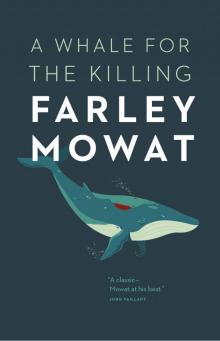 A Whale for the Killing
A Whale for the Killing Sea of Slaughter
Sea of Slaughter The Curse of the Viking Grave
The Curse of the Viking Grave The Boat Who Wouldn't Float
The Boat Who Wouldn't Float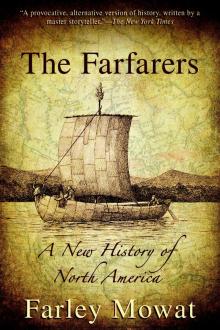 The Farfarers: Before the Norse
The Farfarers: Before the Norse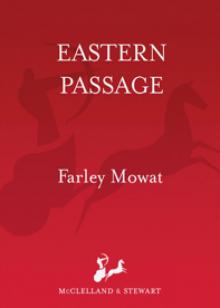 Memoir
Memoir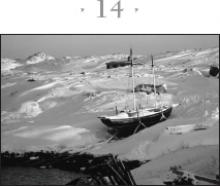 Bay of Spirits: A Love Story
Bay of Spirits: A Love Story The Black Joke
The Black Joke Sibir: My Discovery of Siberia
Sibir: My Discovery of Siberia The Dog Who Wouldn't Be
The Dog Who Wouldn't Be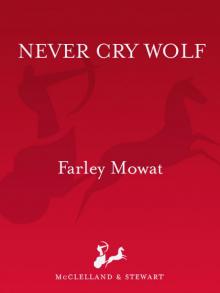 Never Cry Wolf
Never Cry Wolf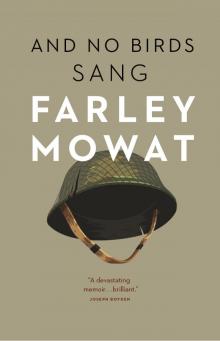 And No Birds Sang
And No Birds Sang The Snow Walker
The Snow Walker Born Naked: The Early Adventures of the Author of Never Cry Wolf
Born Naked: The Early Adventures of the Author of Never Cry Wolf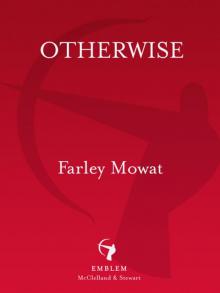 Otherwise
Otherwise Lost in the Barrens
Lost in the Barrens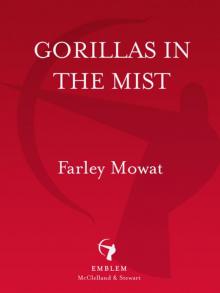 Gorillas in the Mist
Gorillas in the Mist People of the Deer
People of the Deer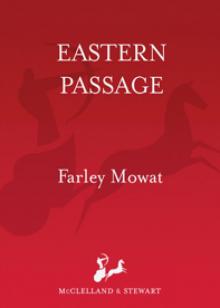 Eastern Passage
Eastern Passage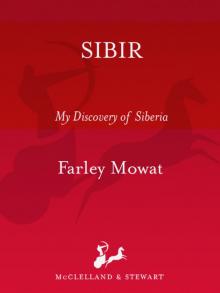 Sibir
Sibir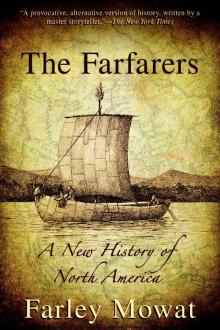 The Farfarers
The Farfarers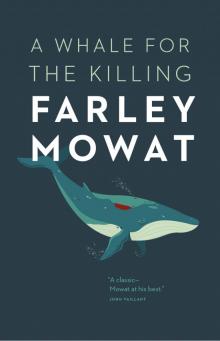 A Whale For The Killing (v5.0)
A Whale For The Killing (v5.0)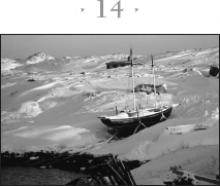 Bay of Spirits
Bay of Spirits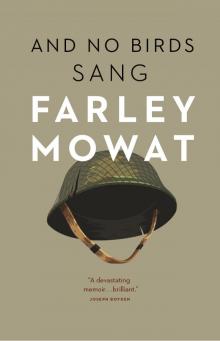 And No Birds Sang (v5.0)
And No Birds Sang (v5.0) Born Naked
Born Naked